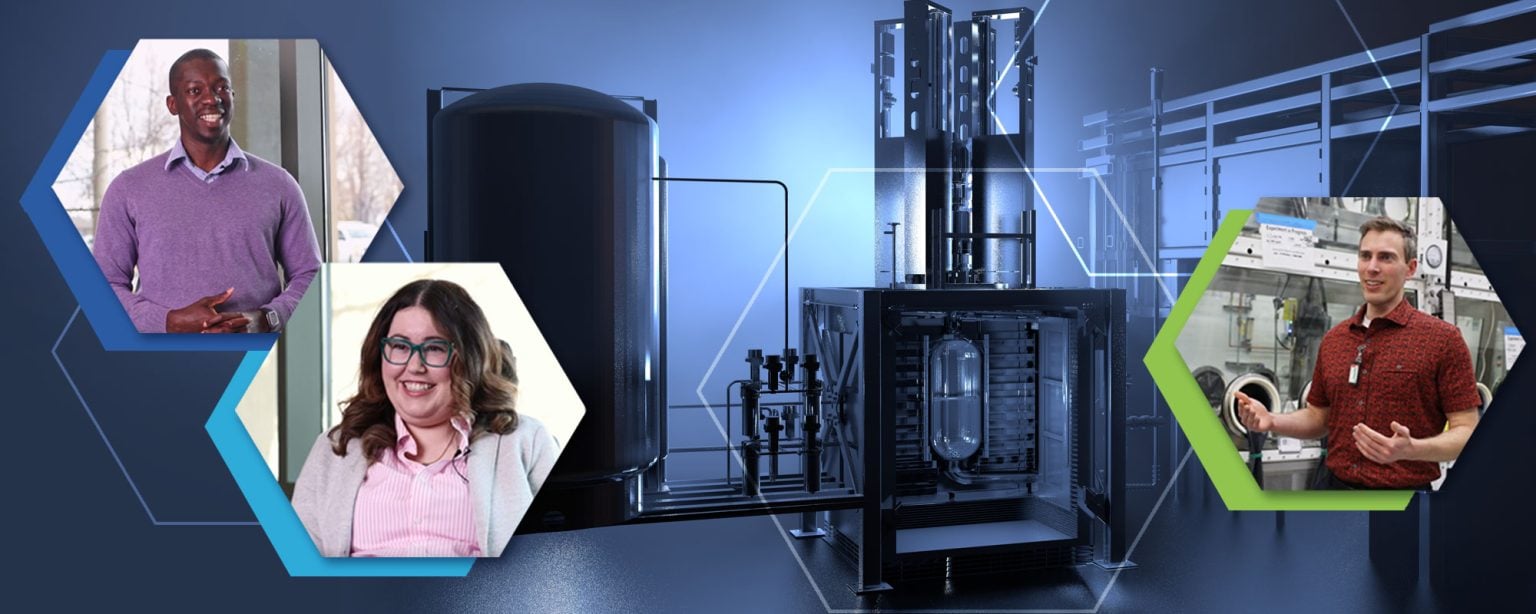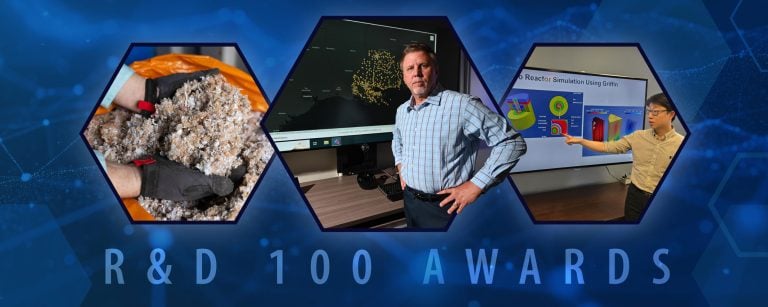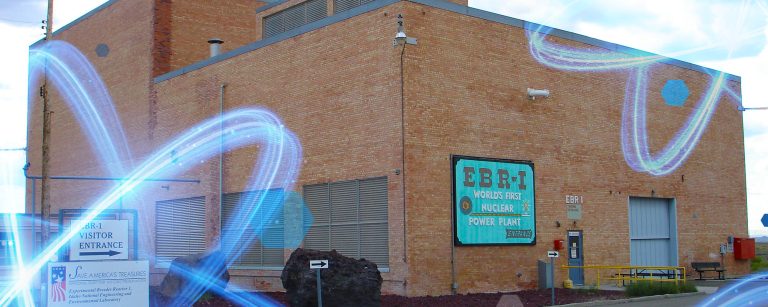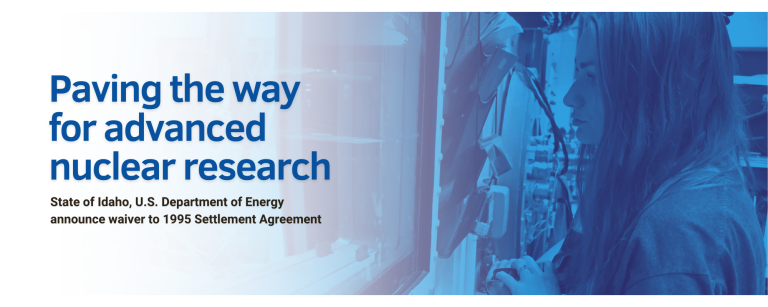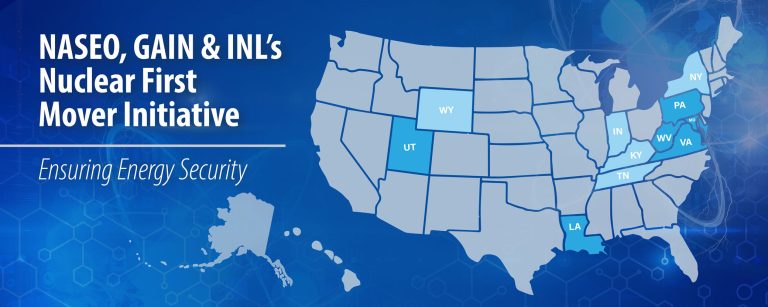When asked to describe her job within the Molten Chloride Reactor Experiment (MCRE), Kristy Spencer smiled.
“Whenever the project needs anything, I’m there and ready to help because I’m kind of obsessed with it,” she said.
Spencer is a nuclear spent fuel analyst at the Idaho National Laboratory (INL). She isn’t the MCRE lead, but she’s integral to the project, managing several of the planned computational analyses and post-irradiation examination activities.
MCRE will be the world’s first test of a fast-spectrum, salt-fueled reactor design. It is a public-private partnership led by Southern Company with partners TerraPower, Core Power and INL. The experiment will use a mixture of molten sodium and uranium chloride salts, allowing researchers and scientists to evaluate the safety and physics of a molten chloride fast reactor.
INL’s role is to synthesize and handle the fuel salt, load and operate the reactor inside the Laboratory for Operation and Testing in the United States (LOTUS) test bed which will be located at INL’s Materials and Fuels Complex, and perform all post-operation deactivation and disassembly work. Such a complex project requires the diverse skill set of various research and operational experts at the laboratory.

“There are all sorts of people involved in the project, and we’re a very close-knit team,” said Spencer. “We spend a lot of time together, and we all kind of bring something different to the project.”
What makes it special?
While there have been other molten salt reactor experiments throughout the history of nuclear energy, this project is a first, since it involves fast-spectrum operation. This means neutrons are moving at a higher speed, which translates to higher energy density and less waste.
“There’s a common analogy: If you had as much uranium as you could fit on a footprint of a lollipop sucker, you could supply your entire lifetime of energy,” said Jacob Yingling, a research scientist at INL. “Well, if we can demonstrate this technology, we’re expecting molten salt reactors to produce about three times the amount of energy density as a traditional boiling water reactor or pressurized water reactor.”
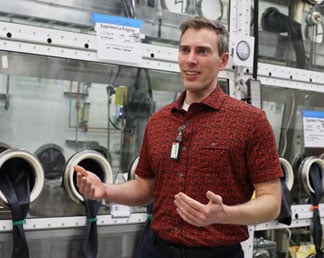
As humanity makes new leaps in technology, including artificial intelligence and other digital breakthroughs, the demand for energy rises. MCRE’s successful operation will add a new type of advanced nuclear energy technology to help ensure that we can meet future energy needs.
Next-gen challenges, dedicated solutions
While the researchers, scientists and engineers involved in MCRE are not strangers to developing new solutions, this project involves a much larger scale. Not only is there new technology to test and prove, there’s an entire fuel cycle to develop.
“We’re doing a lot of first-of-a-kind type work which means that either these problems haven’t been faced before or they haven’t been solved in this particular way,” said Evans Kitcher, a spent fuel analyst at INL. “You need to work collaboratively and iteratively to make sure that whatever solution you’re coming up with works for everyone involved.”

Unlike the ceramic fuels used in traditional reactors, which are fashioned into rods, molten salt reactors use uranium fuel that is part of the molten-salt coolant. Since everything remains fluid, the concept of a nuclear meltdown is mitigated, and removing heat becomes much simpler.
“With a molten solution, you can control more aspects of the reactor with chemistry, but with the material and operational requirements, we are presented with the optimization puzzle of a lifetime,” Yingling said.
It’s a puzzle the MCRE team is primed to solve. INL recently hosted a summit with project partners to discuss specific challenges and plan a series of experiments to solve them.
“That was very much a turning point, and we’ve made almost monthly progress since. Now we’re seeing the light at the end of the tunnel, and I credit a lot of that to the collaboration that we’ve had with our partners,” Yingling said.
Building anticipation with continued progress
MCRE will inform the design, licensing and eventual operation of TerraPower’s Molten Chloride Fast Reactor. With projected operation as soon as 2028, MCRE team members continually check in to ensure progress toward individual milestones.
Most recently, the MCRE fuel salt synthesis team synthesized a full batch of depleted uranium salt, which proves the ability to produce enough fuel for operation. This puts the team one step closer to assembling and operating MCRE.

“I came to Idaho National Laboratory as a postdoctoral researcher in 2022, so just being here at this time, being around to contribute to the problem solving that’s led us to the successes that we’ve had, I just feel a profound sense of gratitude for that experience,” said Yingling.
This appreciation for history in the making rings throughout the MCRE team at INL.
“In grad school, I was very interested in advanced reactors, and I came to INL specifically to work on such projects,” said Kitcher. “To get an opportunity to work on something like this is really the highlight of my short career so far. I’m looking forward to actually getting this thing built and operated.”

